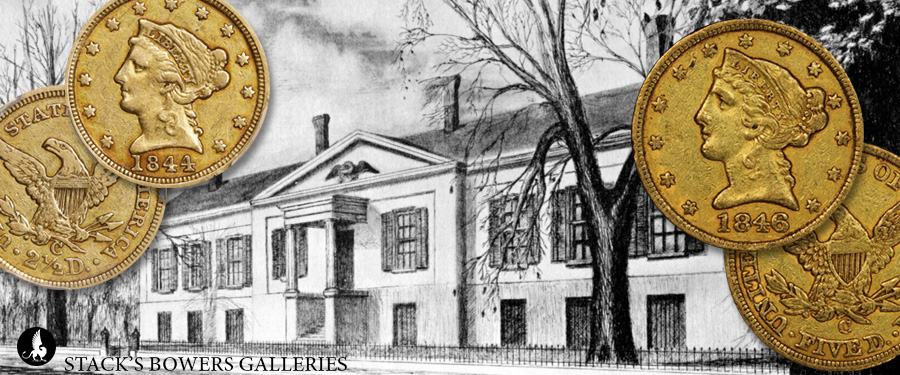
Collectors looking at the Charlotte Mint’s 1840s output might notice a conspicuous hole in the middle of the decade; no gold coinage was produced at that southern branch mint in 1845 owing to a fire that knocked the facility out of commission the previous summer.
The Charlotte Journal reported in its August 1, 1844 issue: “It is our melancholy duty to announce to the public the destruction of the United States Branch Mint in this place, by fire, on Saturday morning last. The fire, when first discovered, was seen to proceed from the upper story of the western wing in the room where the coining presses were kept, and in which, as we learn from some of the workmen, no fire had been for at least ten days before the accident; and we learn from some of those first at the fire that nothing but about 8 feet of the floor had been burnt and had water been handy it might have been easily extinguished, but the air being admitted the flames rapidly spread…”
The Journal continued, offering some speculation that local youth may have been the cause of the fire: “How the fire originated is involved in mystery. Some alledge [sic], that as a number of students were about the building smoking on the evening before, that it may have occurred from a lighted segar [sic] being thrown in an exposed situation – others, again, say that a segar would not set anything on fire.”
The Journal also shared that Green W. Caldwell, the facility’s superintendent and a former State Representative and member of the House of Representatives, was out sick when the fire occurred, and the person he had selected to watch the facility had been staying in the building but, fortunately, was not present the night of the fire.
The North Carolina Standard reported in its August 7, 1844 edition: “The fire was communicated to the roof from the outside, where some carpenters had been at work, and everything contained in the building was destroyed, except the gold in the vaults.”
Outside of the coinage hiatus in 1845, the fire had other numismatic effects. In the 2008 Third Edition of his Gold Coins of the Charlotte Mint, U.S. gold coin expert Doug Winter explains the impact of the fire on the production of gold coinage that year: “quarter eagles and half eagles struck in 1844 saw especially heavy circulation and are, today, much rarer than their mintage figures suggest.” A similar trend holds true for 1846-dated coinage; the facility reopened in October of that year. Caldwell lost documents and “a considerable sum in money,” per the Charlotte Journal’s reporting. The North Carolina Standard reported Caldwell’s losses at $1,000 to $2,000.





